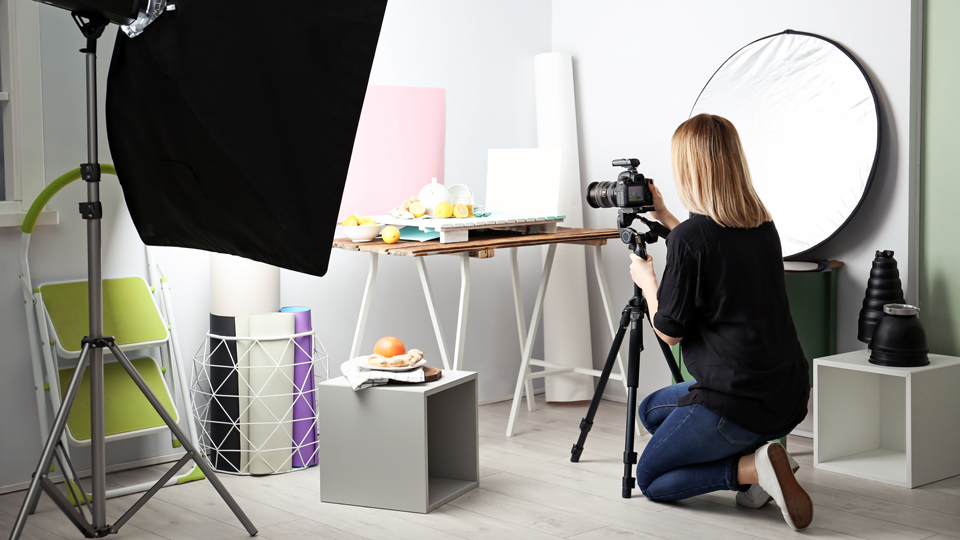Shocking Insights: How to Master Lighting in Photography?
In the world of photography, the **key** to capturing stunning images lies significantly in mastering one fundamental aspect: lighting. Whether you're a seasoned professional or a budding photographer, understanding how to master lighting in photography is essential for elevating your craft and taking your work to the next level. Knowledge and technical skills around lighting can be remarkably transformativeit's the difference between a mediocre snap and a striking masterpiece.
This guide aims to delve into the intricacies of lighting, unravel the shocking truths behind its effects, and hone the skills essential for triumph in this art form. So fasten your seatbelt; we are about to embark on a terrific journey into the realm of lighting in photography!

Understanding the Basics of Lighting
Before we dive deeper, let's clarify what effective lighting means in photography. Light is essentially the foundation upon which all photography is built. Not understanding it can significantly hinder your ability to create stunning images. There are numerous types of lighting: natural light, artificial light, and mixed lighting situations. However, knowing how to manipulate these elements can help you produce spectacular results.
The Importance of Natural Light
Natural light is often considered the best ally for photographers. It offers a variety of colors, tones, and intensities that can create beautiful images. Factors like time of day, weather, and surroundings can significantly impact how this light can be utilized. Early mornings and late afternoons are excellent times for photography as the sunlight is softer and more flattering. Learning to work with these golden hours can yield astonishing results.
Artificial Lighting Techniques
While natural light is helpful, there are occasions when you must use artificial lighting. Mastering things like flash, softboxes, and light reflectors is essential. Each device serves a unique purpose and can help illuminate your subject in different ways. Ensure you're well acquainted with various setups to suit portrait, product, or landscape photography.
For insights into the setup of studio lighting, visit this studio lighting guide to make your job easier.

Different Types of Lighting in Photography
Understanding the difference between types of lighting is crucial for any professional photographer. Here are some categories you should consider:
- Hard Light: Direct light that creates strong shadows and highlights. This type of light is often used for dramatic effect.
- Soft Light: Diffused light that produces gentle transitions with minimal shadows. Great for portraits.
- Backlighting: Light that comes from behind the subject, often creating silhouettes or a beautiful halo effect.
- Ambient Light: Natural light that fills a space, providing a base level of illumination.
Understanding these types and their characteristics is a step towards mastering how to apply them effectively in your photography.
For more in-depth information on the types of lighting, check out this lighting guide.

Utilizing Directional Lighting
Directional lighting provides depth and dimension to your photographs. Understanding its flow allows photographers to manipulate shadows and highlights creatively. Depending on where the light source originates, it will change the entire feel of your images. For instance, side lighting can enhance textures, while overhead lighting creates a completely different mood.
To learn more about directional lighting, dont miss this insightful article.

Lighting Setup for Specific Types of Photography
Different photography styles require different lighting setups. For example, portrait photography often uses multiple soft light sources to soften the face, while product photography may require bright, hard lighting for clarity.
Moreover, setting up lighting for clothing photography entails a distinct approach. To get professional tips on how to set up lighting for clothing photography, you can find useful details in this quick guide.
Natural vs. Artificial: Which One to Use?
One of the common dilemmas photographers face is whether to use natural lighting or artificial sources. Each has its own advantages and disadvantages. Natural light can be unreliable and varies from moment to moment, whereas artificial lighting can be controlled and manipulated to fit the desired outcome.
Mixing Light Sources
Oftentimes, the best results surface when you combine both natural and artificial lighting. This synchronization creates a rich variety of tones and textures in your images. However, careful balancing is key to avoid overwhelming your subject with unwanted shadows.
The Power of Light Modifiers
Light modifiers are essential for achieving the perfect quality and direction of light. Some of the common modifiers include reflectors, diffusers, and softboxes. Each of these tools affects light characteristics, thereby enabling photographers to achieve their desired look.
Using reflectors can bounce light back onto your subject, providing extra illumination around shadows. Diffusers soften harsh light, making it more flattering for portraits. These are techniques that can significantly enhance your photography while mastering lighting!
Practicing Lighting Techniques
Once youve grasped the theoretical aspects of lighting, it's time to put your newfound knowledge into practice. Experimenting is essential. Take your camera and start shooting in different lighting conditions while applying the techniques discussed in this article. Try to explore how changes in lighting can alter the mood, subject, and overall feel of your images.
Conclusion: Steps towards Mastery
Mastering lighting in photography is not an overnight endeavorit requires practice, persistence, and a keen eye. Familiarizing yourself with the principles and methods of light will fundamentally impact the quality of your work. Keep exploring, experimenting, and learning to be a more proficient photographer.
FAQs
1. What is the best time of day for natural light photography?
The best times are often referred to as the golden hour, which occurs shortly after sunrise and before sunset when the light is soft and warm.
2. How do I know which lighting setup to use?
The appropriate lighting setup depends on the context of your shoot, the mood you're trying to convey, and the subject's characteristics.
3. Can artificial light be used in outdoor settings?
Absolutely! Many photographers use flash and reflectors to enhance their outdoor setups successfully.
As an Amazon Associate, I earn from qualifying purchases.

